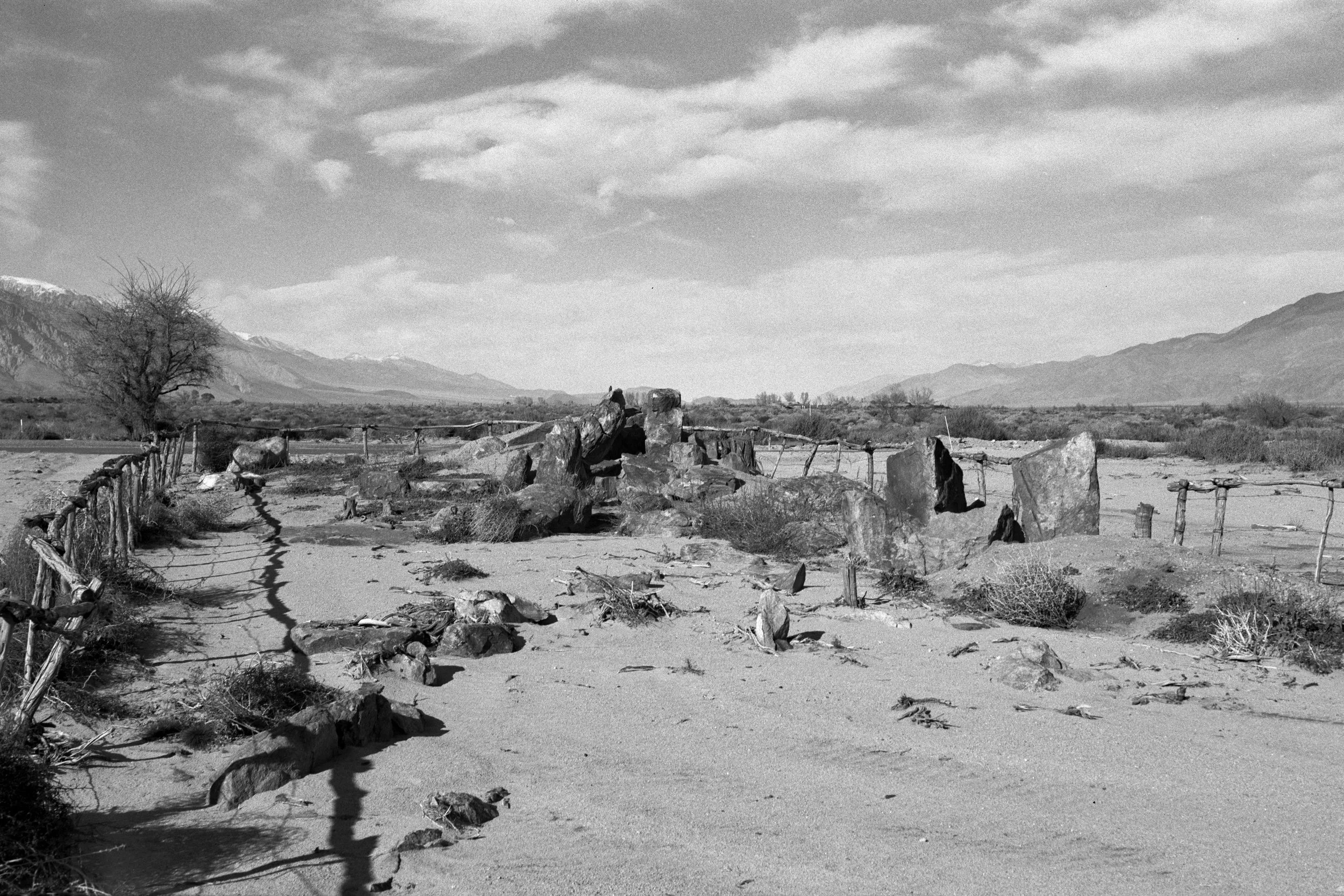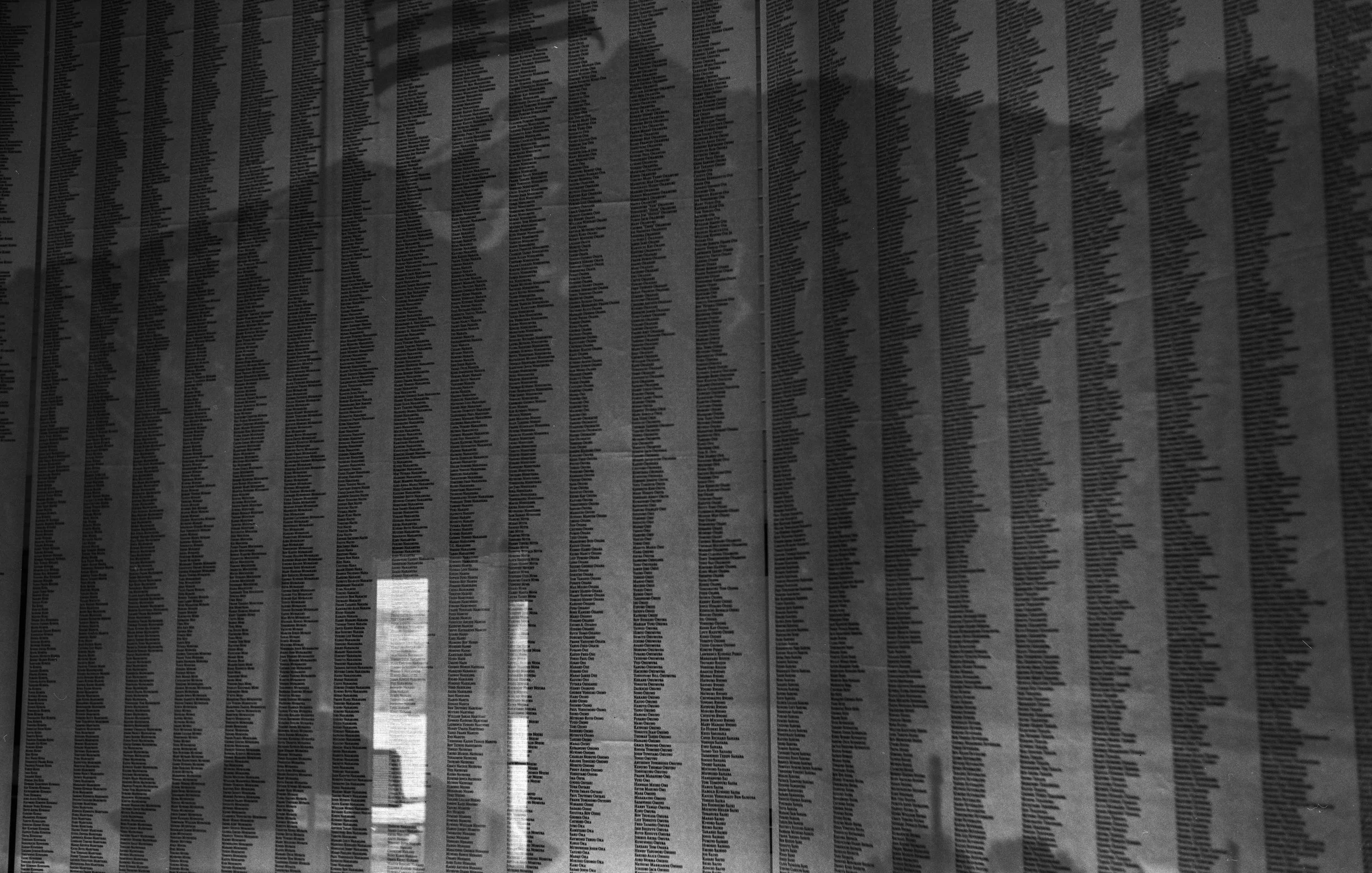Stand Across from Relic
Yujian(Rikki) Cui
What made me passionate about Asian history was the moment I stood across from the Chinese American Museum in Los Angeles. I had just arrived in Los Angeles at that time, and it was close to the end of the “Asian Hate” movement. There was always somebody threw hate speech at me, also on my wobbly heart. The language barrier and unfamiliar environment made me afraid to fight back. I just lowered my head and ran away. But hurts by those words hovered around my sensitive heart, sometimes lasting a whole day, sometimes waking me up at midnight. If one or two times can be regarded as exceptions, the thousands of discrimination that happen to us every day made me question myself: Did we do something wrong?
One day I passed by a building in the car, it was a strange one: a traditional Western-style building with red bricks. There were few willows in front of it, hanging branches swung by winds. There were some whiteboards on it, with some words I was familiar with. With a quick glance, I only remember some impressive words: “ Wind blows it tilt and spin.” Such a strange feeling, at the moment I could connect with the building through these words, not because of the delicious Chinese food, not the same style of the building, but maybe the meaning it represented. The outlook of the building twinkled in my mind all day. I tried to use the map to locate the building and finally found out their name: Chinese American Museum, very official. I opened their website: 华美(Huamei) museum popped out.
There was more information gushed into my mind: the 1871 Chinese Massacre, Calle de los Negros. The emotion inside me got released at that moment: We didn’t do anything wrong, we just always get blown, tilt, and spin. I knew I had to go back to there again.
I stood on the empty street. There were not many people walking on the sideway, it was narrow and crowded, but I think it was wide and empty at that time. The red giant building in front of me. Weirdly, it shouldn’t be that huge. There was a road between us, with no car, we just stared at each other. The willows between us rustling with wind. My breath turned rushed and heavy, and the bag on my shoulder felt like a giant stone. I threw it on the floor, but nothing changed. I looked at the building in front of me. It was still staring at me, saying or showing something to me. My heart was racing, I couldn’t even breathe. I fell onto a stone stair behind me and finally felt better. I looked at the building again, there was some sadness around it, but it turned silent. My hand was wet already, it was my tear. Suddenly there were people showed up, and cars were passing the street. How could there be no car in Los Angeles downtown? I was embarrassed, and used the camera on my neck to take a quick shot, then ran away.
But I still could feel the sight behind me.
I imported the photograph into my computer, it was a quiet picture. The building looked gentle and soft, it was just standing there and said nothing. I printed the photograph out, and suddenly felt the picture was loud when I holding it. Not the museum itself, it’s the history behind it. When I took the picture, I was standing on the Calle de los Negros, where the 1871 Chinese Massacre happened. There’s no blood and bodies in the picture. Branches of the willow waving, a beautiful bright blue sky, shining with the elegant dark red wall of the Chinese American Museum. How can you tell the atrocity by such a quiet and beautiful picture? Is it able to restore my (or the whole Asian community) memory?
I felt weak at the time.
I can do nothing with this photograph. Memory is already blurred, people are forgetting, and nobody brings it back again. Maybe years later, the building will leave, and be taken over by a new memory. The most hurt thing is this photograph itself even can’t be the index of the atrocity — It CANNOT restore the memory. I don’t know how to deal with it. I felt guilty and weak. I rolled the print up, it glanced at me, but without any blame. It just stood in the corner of my studio.
One year later, when I was going to move to a new studio, I saw this dusty roll. I opened it up. It seemed frozen at the time that glanced at me, maybe with a little sadness. My memory of it got back, although with a little distortion. The willow never wave, not even the leaves. It was just sitting still. The building looks short, because of the huge space left by the sky. But it doesn’t matter, I still getting touched by this photograph.
Then I suddenly realized the meaning of the photograph is not to restore the memory, it is to confirm.
To confirm the presence of the history in the present. Even the relationship between photographs and memory is not positive. In the photograph of the Chinese American Museum, I realized a single photograph is inherently inadequate for storytelling. I don’t want to solve this problem, instead, I want to use the fragmented storytelling of each photograph, and interact with others, to nail down the meaning. To make it simple, I wish my photographs could create a larger image together — that is the feeling I felt when I stood across the Chinese American Museum.
In the last few years, I kept visiting the relics of Asian American history in California. The Manzanar Japanese American Historic Site in the burning desert, Locke Twon in the vivid delta valley, the Chinese Railroad Workers History Center in the modernized and crowded San Francisco Chinatown, and the Central Pacific Railroad Company replica in Sacramento Old Town. Standing across the relics, you are not just seeing the ruined wall and bricks. You are seeing the massive histories. If you feel that, do not feel sad and blame yourself for the weakness in your heart.
在遗迹的对面
让我对亚裔历史产生强烈热情的的,是我站在洛杉矶华美博物馆对面的那一刻。彼时我刚刚到达洛杉矶,恰逢亚裔仇恨风暴的余波。在洛杉矶路上行走的时候时常有人向我扔出种族歧视的言论,击打在我刚刚落地而踉跄不稳的心上。我只能怯怯跑掉,语言的不通与环境的陌生让我没有勇气还击,而每一次言语的攻击都能在我敏感的心理盘旋,有时会持续一整天,有时会成为半夜惊醒我的噩梦。如果一两次的攻击可以被视为例外,那大面积对我们的歧视让我不禁产生害怕与疑问的心理:我们是否做错了什么?
直到某天我乘车经过了一个建筑,那是一个很奇怪的建筑。红色的砖瓦,传统西方建筑的风格,建筑前面有几株柳树,垂荡的枝条隐隐约约,随风飞扬。而最抓我眼睛的是建筑上的几幅白色的牌匾,上面清清楚楚地写着我认识的文字。匆匆一眼,我只看到了我印象最深刻的寥寥几字:“风吹斜又转。” 奇怪的感觉,一瞬间这寥寥几字让我和这栋建筑瞬间连接了起来,不是因为熟悉的中餐,不是因为与家乡建筑相似的外观,而也许是因为其所代表的心情。它的样子一直在我脑海中闪烁,我一整天都在想着它。于是在回家后我使用地图定位并找到了那个建筑的名字:Chinese American Museum,很官方的名字。而搜索并打开他们的官网后:华美博物馆,跳到我的眼前。
更多的信息,华人大屠杀,calle de los negros等等涌进我脑海。那一瞬间我心里一直压抑的某种心情突然得到释放:我们没有做错什么,我们从古至今一直被这样风吹而斜转。那时我就知道,我一定要再去华美博物馆一次。
我站在一个空荡的街道上,洛杉矶市中心的路上其实很少有人步行,街道设计的狭窄拥挤,但我记得那时候很宽阔空荡。我对面是个红色的巨物,很奇怪,其实建筑本身应该不算很高大。我们之间隔着马路,没有一辆车经过,我们就这么互相看着对方,中间的柳树被热风吹得窸窸窣窣。我的呼吸变得急促而沉重,我觉得自己肩膀上的包越来越沉,压的我喘不过气,我把它甩在地上,但我还是觉得什么在压着我。我向着对面又看了一眼,它还在凝视着我,好像在说话,也可能是在给我看什么东西。我的心跳越来越快,甚至都没法正常呼吸。我瘫坐在身后的石阶上,终于感觉稍微缓和了些。我向对面看去,它沉默下来,但它看起来更感伤了。我注意到手上湿湿的,眼泪不知道什么时候顺着脸滴到我的手上,周围的人多了起来,车也来来回回,洛杉矶的市中心又怎么可能没有车呢。我羞愧难当,用脖子上的相机匆匆给它拍了一张照片就逃离了这个地方。
回家后我将照片导入电脑,一张很安静的照片,它的样子好像是温柔的,只是那么静静地在那里,什么也没有讲。我将照片打印下来,拿在手里,我又觉得这个照片很吵。不是华美博物馆,而是它身后的历史。拍摄这张照片的我,就站在1871年华人大屠杀发生的Calle de los Negros上,照片上没有血渍,没有尸体。柳条被微风轻轻地扬起,湛蓝的天空,衬着华美博物馆优雅暗红的砖墙。这么美的照片,怎么能够看出是暴行发生过的证据呢?它是在还原我的(或者整个亚裔的)记忆吗?
一种无力感涌上心头。
面对这张照片,我什么都做不了。记忆已经模糊,没多少人记得,也没人重提。再过几十年,这个建筑是否也会转身离去,被新的记忆接管?更令我心痛的是,这张照片本身,甚至都无法成为记忆的索引——它没办法还原记忆。我不知如何应对它,我好像对它有愧疚,我无能为力。于是我将它卷起来,它在最后瞥了我一眼,但没有责备。它就这么立在了我工作室的角落。
一年后,当我要搬到新的工作室时,我看到这个落满灰尘的纸卷。我轻轻展开它。它的时间似乎定在了那最后带些忧伤的一瞥,再也没变过。我对它的记忆重又卷了回来。尽管似乎并不与照片完全一致。柳树没有被风吹过,它们只是静静地垂着,甚至没有一片叶子飘起来。建筑突然变得有些矮小,蓝天留的空间好大。但这已经不重要了,我依然能被这张照片而感动。
在那一瞬间,我突然明白这张照片的意义并不是记忆,而是确认。
确认历史在当下的在场,哪怕照片与记忆的关系甚至不是正向的。在华美博物馆的照片中,我意识到了单张照片对于叙事的先天不足,但我并不想解决这个问题,而是想利用照片的碎片化叙事,讲求多张照片的相互作用,并锚定意义。
如果用不那么晦涩的语言来讲,就是我希望我的照片们聚在一起能够形成一幅更大的图像——那就是我站在华美博物馆对面的感觉。
在过去的几年中,我不断拜访位于加州的亚裔历史遗迹,不论是炎炎沙漠中曼扎纳日裔美国人集中营、旧金山车水马龙里的美国铁路华工中心旧址、萨克拉门托旧城中的中央铁路公司的复制品,还是茵茵绿洲中的洛克镇等等。站在遗迹前看到的,并不是那些残垣断壁,而是汹涌咆哮的历史。如果你感受到了,不要为心中的无力而悲伤自责。
I REI TO ( Soul Consoling Tower), Manzanar
Signs of Disappearing Buildings,
Manzanar
Historic Photo in Manzanar, Manzanar
Bell of the Immigrant Station, Angel Island
Relic of the Japanese garden in Manzanar, Manzanar
Sacramento Old Town, Sacramento
Chinese Railroad Workers Historic Center, San Francisco
Old Town, Sacramento
Old Town, Sacramento
Old Town, Sacramento
Main Building of the Immigrant Station, Angel Island
Toys in Locke Town, Locke Town
The words carved on the wall of the main building, Angel Island
Name of the people confined in Manzanar, Manzanar
Face-in-hole Board, Locke Town
A building on the way out of Immigration Station, Angel Island
Gates of the Immigrant Station, Angel Island
Sacramento Sweets, Sacramento
Bird lives in the abandoned building in Locke Town, Locke Town
Old Town, Sacramento
Old Town, Sacramento
Old Town, Sacramento
Abandoned Train in Old Town, Sacramento
English class in Immigrant Station (Replica), Angel Island
Carved words, Locke Town
Basketball field in Manzanar, Manzanar



























